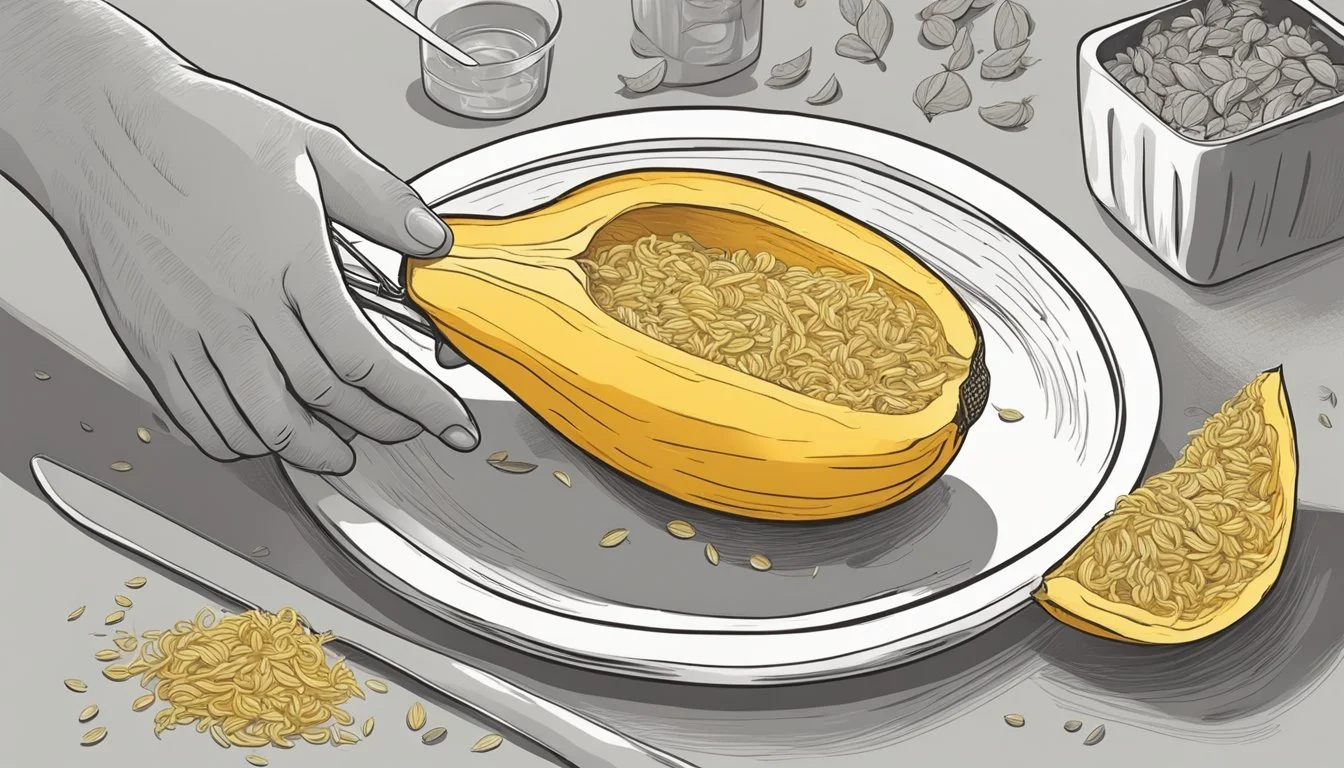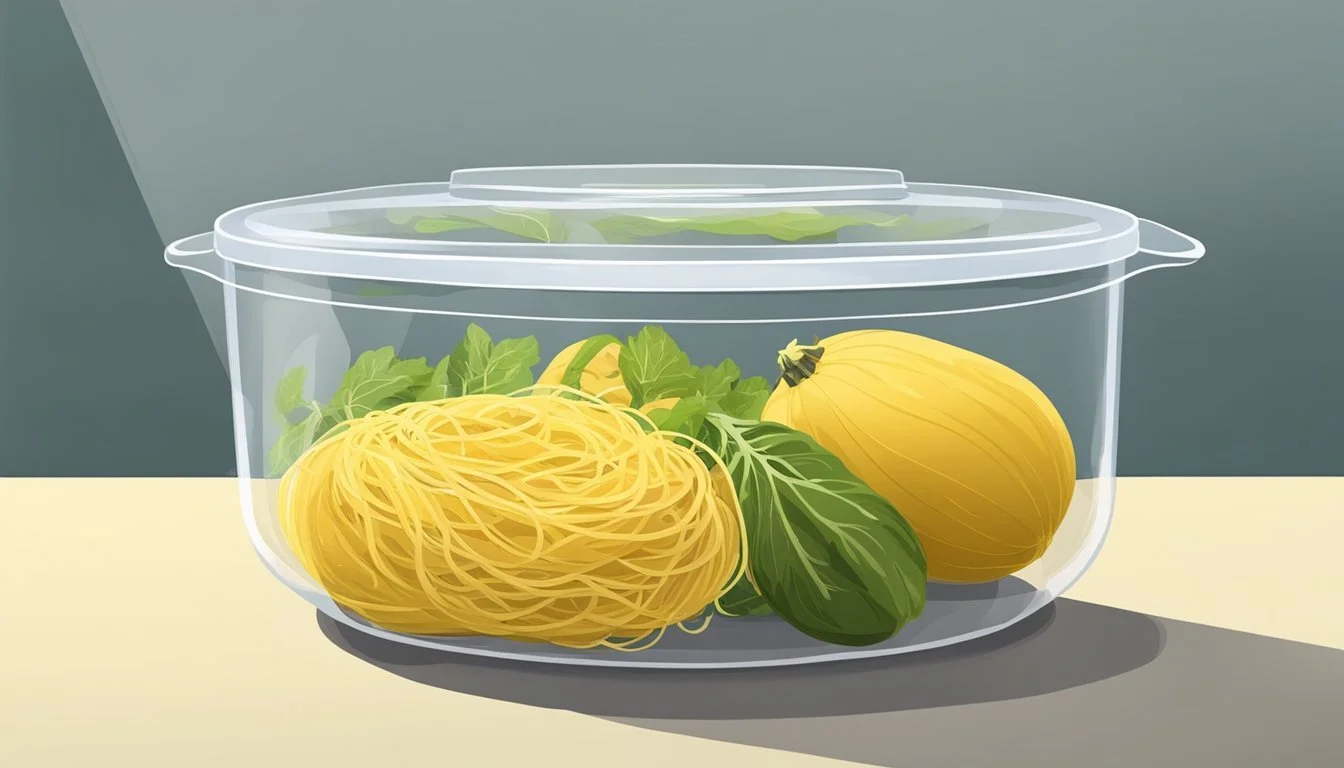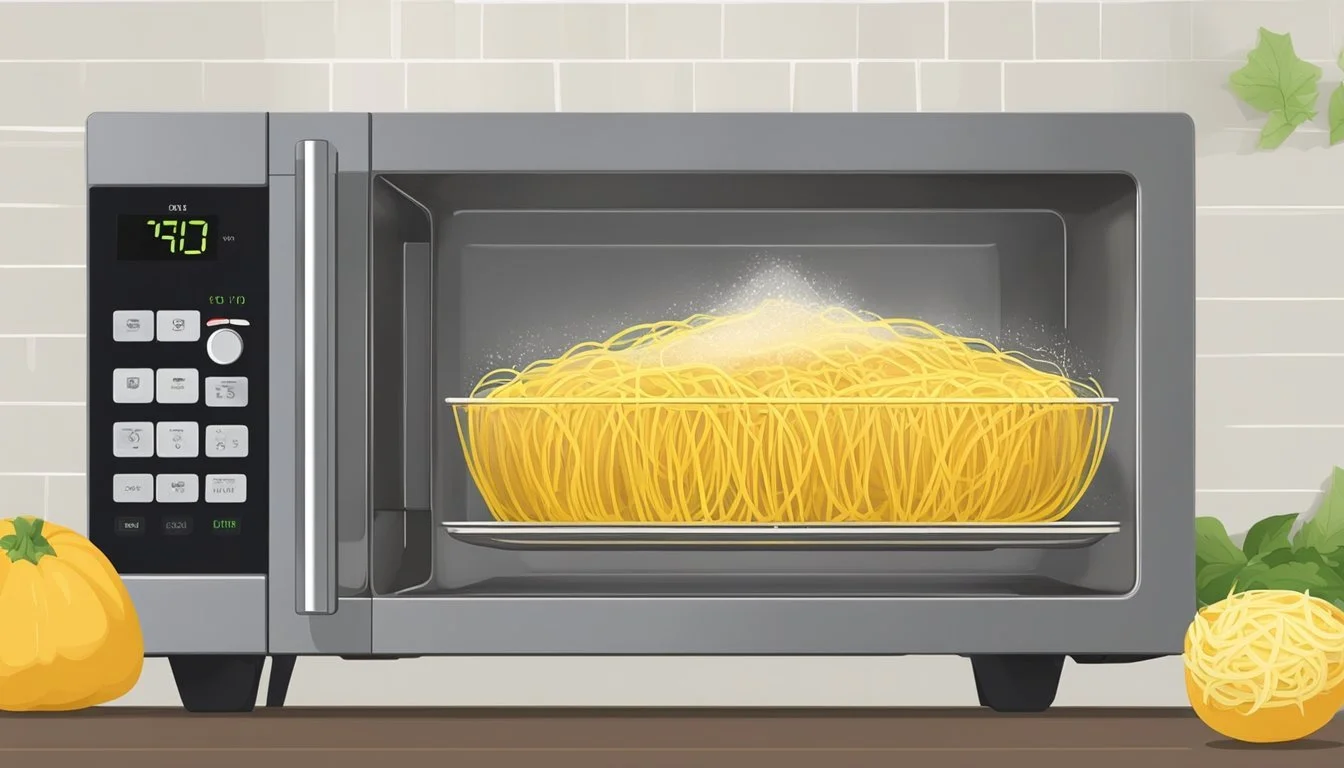How to Reheat Gluten-Free Spaghetti Squash
Expert Tips for Perfect Texture
Reheating gluten-free spaghetti squash can be a game changer for quick and healthy meals. Whether you have leftovers from a previous dinner or meal prepped for the week, knowing the best techniques to revive your spaghetti squash is essential. The quickest way to reheat spaghetti squash is in the microwave, placing it in a microwave-safe dish and heating on medium power for 45 seconds to 2 minutes, stirring halfway through for even heating. This method retains its texture while ensuring it heats thoroughly without drying out.
For those who prefer a different approach, the oven method offers a more even heat distribution. Preheat the oven to 350°F (175°C), place the spaghetti squash on a baking sheet lined with parchment paper, and bake for about 20-25 minutes. This technique is perfect for maintaining the squash's tender yet firm consistency and infusing it with any desired seasonings or oils.
Understanding these methods helps maintain the nutritional integrity and delightful taste of gluten-free spaghetti squash. Each technique has its merits, catering to different preferences and time constraints, ensuring that reheating this healthy squash fits seamlessly into any culinary routine.
Selecting and Preparing Spaghetti Squash
To begin, it's essential to choose a good quality spaghetti squash. Look for one that's firm, with a uniform pale yellow color and no soft spots. The squash should feel heavy for its size.
Preparation Steps:
Wash and Cut
Rinse the squash under cold water to remove any dirt. Cut it in half lengthwise using a sharp knife. Be cautious, as the outer skin can be tough.Remove Seeds
Use a spoon to scoop out the seeds from each half. These seeds can be roasted later if desired.Roasting Method
Preheat the oven to 400°F (200°C). Brush the flesh of the squash with olive oil and season with salt and pepper as preferred. Place the halves face-down on a baking sheet lined with parchment paper. Roast for 40-45 minutes or until the flesh is tender.Testing for Doneness
Insert a fork into the flesh to check if it is easily pierced. If so, it is ready. The flesh should also separate easily into strands resembling spaghetti.Scraping
Once roasted, use a fork to gently scrape the flesh from the squash halves to create long, spaghetti-like strands.
Cooking Tips:
For a quicker prep, you may microwave the squash halves by placing them cut-side down in a microwave-safe dish with a bit of water. Microwave on high for 10-12 minutes.
To enhance flavor, add herbs like thyme or rosemary before roasting.
Adding garlic powder or crushed red pepper flakes can give an extra kick to the squash.
Selecting and correctly preparing spaghetti squash is crucial to ensure it maintains its texture and flavor. Following these steps will give the best results.
Storing Cooked Spaghetti Squash
Properly storing cooked spaghetti squash ensures it retains its taste and texture for future meals. Depending on the intended duration of storage, it can be kept in the fridge or freezer.
In the Fridge
To refrigerate spaghetti squash leftovers, let the cooked squash cool completely. Cooling prevents condensation, which can introduce unwanted moisture.
Store the cooled squash in an airtight container to lock out air and moisture. Alternatively, use a resealable plastic bag, squeezing out as much air as possible before sealing.
Label the container with the storage date using masking tape or a permanent marker. This step helps track its freshness. Stored this way, the cooked spaghetti squash typically stays fresh for 3-5 days in the fridge.
Freezing for Long-Term Storage
For long-term storage, freezing is an effective method. Spread the cooked spaghetti squash strands on a baking sheet in a single layer. This prevents clumping.
Place the sheet in the freezer for about 1-2 hours until the squash is frozen solid. Once frozen, transfer the strands to a resealable freezer bag or airtight container. Be sure to label with the freezing date.
When you're ready to use the squash, thaw it in the fridge overnight. Freezing spaghetti squash this way can preserve it for up to 6-8 months.
Basic Reheating Techniques
Reheating gluten-free spaghetti squash can be simple and efficient. Key methods include using the oven, microwave, and stovetop for optimal texture and taste.
Using the Oven
For even heating, preheat the oven to 350°F (175°C). Slice or dice the leftover spaghetti squash. Spread it on a baking sheet lined with parchment paper or aluminum foil.
Add a light drizzle of olive oil to prevent drying out. Season with salt and pepper if desired. Bake for 20-25 minutes, until heated thoroughly. Regularly check to avoid over-baking, which can alter the texture.
Microwave Method
Microwaving is the quickest way. Place the spaghetti squash in a microwave-safe dish. Cover it with a lid or microwave-safe plastic wrap to retain moisture.
Heat on high for 1-2 minutes per cup, stirring midway to ensure even warmth. This method is ideal when time is limited. Be cautious to avoid over-microwaving, which can make the squash mushy.
On the Stovetop
Heat some water in a saucepan until it starts to boil. Lightly salt the water and lower the heat. Add the spaghetti squash, letting it simmer for about 7 minutes.
This method helps maintain the squash's light texture. Another option is to use a skillet. Add olive oil to a preheated skillet, then stir the squash over medium heat for around 5 minutes. Stir often to prevent sticking.
Enhancing Flavor and Texture
Maximizing the flavor and texture of reheated gluten-free spaghetti squash is crucial for a satisfying meal. This involves proper seasoning and pairing the squash with complementary foods.
Seasoning Your Spaghetti Squash
To enhance the taste, start with olive oil to coat the squash, adding moisture and a rich flavor. Salt and pepper are essential for bringing out the natural sweetness. For added depth, incorporate garlic powder or crushed red pepper flakes.
Italian herbs such as basil, oregano, and thyme can add a Mediterranean touch. Sprinkling Parmesan cheese or other varieties like mozzarella can provide a savory note. For a bit of luxury, a drizzle of truffle oil can elevate the dish.
Pairing with Complementary Foods
Pairing the reheated spaghetti squash with the right foods can significantly enhance both flavor and texture. Meat sauces such as a hearty Bolognese add robust flavor and hearty texture. For a vegetarian option, consider a mix of sautéed mushrooms, spinach, and cherry tomatoes.
Pesto sauce works well, especially when garnished with pine nuts and Parmesan. Crispy bacon bits can provide a crunchy contrast, while a simple marinara sauce offers familiarity without overwhelming the squash. Including other vegetables like bell peppers or zucchini can add color and nutritional value.
Health Benefits and Nutritional Information
Spaghetti squash offers a host of health benefits making it an excellent choice for a gluten-free diet. It is low in carbs, which makes it suitable for those managing carbohydrate intake.
A typical serving of cooked spaghetti squash contains about 42 calories, making it a low-calorie food. Its fiber content is beneficial for digestion and maintaining a healthy gut.
Spaghetti squash is rich in nutrients. It provides vitamins such as vitamin A, vitamin C, and various B-complex vitamins. These vitamins play crucial roles in immune function, skin health, and energy metabolism.
For those looking for a low-carb option, spaghetti squash is perfect. It has a sweet, nutty flavor that enhances many recipes. Plus, it is a good source of potassium, a mineral essential for maintaining proper heart function and blood pressure levels.
Here is a brief nutritional breakdown of 1 cup (155 grams) of cooked spaghetti squash:
Nutrient Amount Calories 42 Carbohydrates 10 g Fiber 2 g Protein 1 g Fat 0.5 g Vitamin A 4% of RDI Vitamin C 5% of RDI Potassium 5% of RDI
In addition to its nutritional value, spaghetti squash provides minerals like zinc, copper, and calcium, supporting overall health and wellness.
This vegetable is not only gluten-free but also adaptable to various dietary needs, making it a versatile choice for maintaining a balanced and healthy diet.
Creative Uses for Leftover Spaghetti Squash
Leftover spaghetti squash can be transformed into a variety of delicious dishes, bringing diversity to your meals while staying gluten-free. Explore these ideas to make the most out of your leftovers.
Recipes and Ideas
Spaghetti Squash Fritters: Combine the squash with almond flour, parmesan cheese, and a beaten egg. Form into patties and fry in a hot skillet until golden. This offers a hearty, flavorful side dish.
Stuffed Bell Peppers: Fill bell peppers with a mix of spaghetti squash, black beans, corn, and cheese. Bake until tender for a comforting, gluten-free main course.
Casserole: Layer spaghetti squash in a baking dish with marinara sauce, mozzarella, and cooked ground beef. Bake until bubbly for an easy, low-carb dinner.
Alternative Pasta Dishes
Spaghetti Squash Lasagna: Use spaghetti squash in place of lasagna noodles. Layer it with ricotta cheese, bolognese sauce, and spinach for a delicious pasta alternative.
Spaghetti Squash with Pesto: Mix heated spaghetti squash with pesto sauce and top with pine nuts and parmesan cheese. Serve as a light, yet satisfying main course.
Squash Carbonara: Toss leftover spaghetti squash with crispy bacon, eggs, and parmesan cheese. This creamy, low-carb version of carbonara keeps the comfort food element without regular pasta.
Zoodles Substitute: Replace zoodles in any recipe with spaghetti squash. It pairs excellently with meatballs and marinara for a hearty, gluten-free meal.
Avoiding Common Mistakes
When reheating gluten-free spaghetti squash, it is crucial to prevent overcooking and maintain proper moisture levels to ensure optimal texture and flavor.
Preventing Overcooking
Overcooking can lead to mushy spaghetti squash, diminishing its appealing texture. Monitoring time and temperature during reheating is essential. When using a microwave, heat the spaghetti squash in short bursts, typically 1-2 minutes per cup, and stir halfway through. This helps distribute heat evenly, avoiding hot spots that could overcook parts of the squash.
If using an oven, preheat to 350°F and reheat for 20-25 minutes. Place the squash on a baking sheet lined with parchment paper. Check frequently to avoid overcooking. For stovetop reheating, use low to medium heat, reheating for about 5 minutes, and stir constantly to prevent burning.
Ensuring Moisture Control
Maintaining adequate moisture levels is vital as dry spaghetti squash can become unappetizing. Moisture control involves adding a bit of water or broth when reheating. In a microwave, cover the squash with a damp paper towel or plastic wrap to trap steam, which helps retain moisture.
For stovetop methods, add a few tablespoons of water or broth to the pan, stirring continuously to keep the squash from drying out. When reheating in the oven, you can brush the squash with olive oil or butter and cover it loosely with foil to maintain moisture while warming.
Proper storage before reheating is also important. Store leftovers in airtight containers, keeping moisture locked in and preventing them from drying out.
Conclusion
Reheating gluten-free spaghetti squash can be done using several methods, each with its unique advantages. For quick and efficient results, the microwave is an excellent choice. Simply mix the squash gently, cover with a lid or paper towel, and heat in short bursts, stirring occasionally.
The oven allows for a more controlled reheating process. Preheat to 350°F, brush the squash with olive oil or butter, and season as desired. Reheat on a parchment-lined baking sheet for 20-25 minutes.
Another effective option is reheating on the stovetop. Use a skillet over low to medium heat, stirring gently to maintain texture without scorching. This method gives more control over heat and texture, ensuring even warming.
Each method ensures that leftovers retain their healthy attributes and are ready for delicious gluten-free servings. Select a method that best fits the available time and desired texture to enjoy your reheated spaghetti squash.








